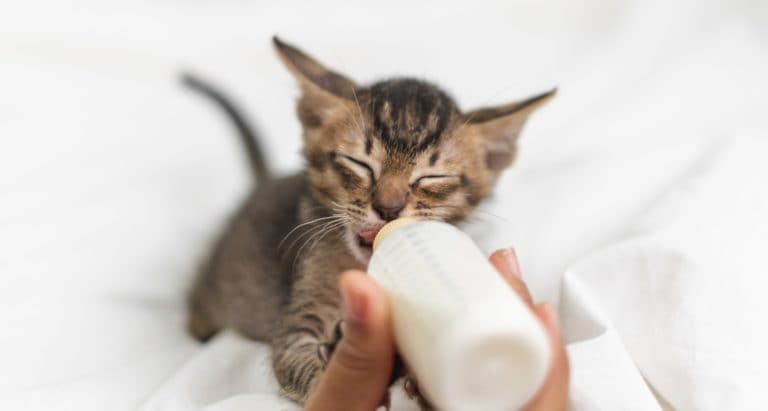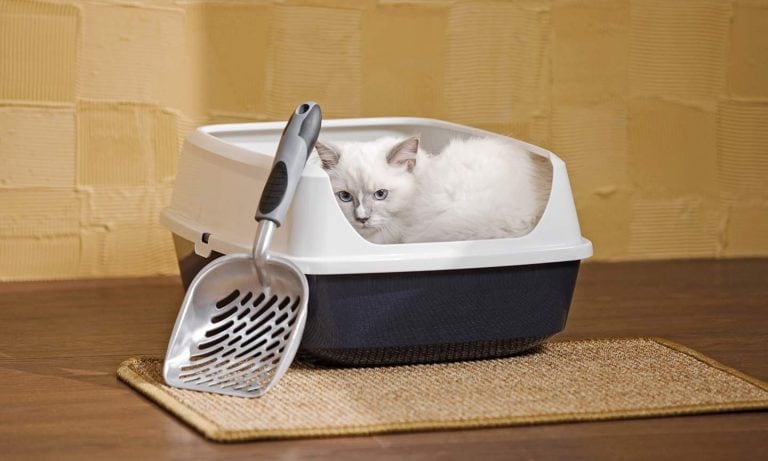Part of being a kitten parent is making sure your pet is kept healthy. And that means taking your new little fluff-ball to the veterinarian.
Here’s when you should take your new kitten to vet, how to prepare for the vet visit, and what you can expect.
When Should You Bring Your Kitten to the Vet?
As a rule, a cat adopted from a shelter should be seen by a veterinarian within a week of coming home. For a cats who are purchased from breeders or pet stores, it is recommended to schedule a visit within a few days.
Scheduling a Vet Visit After Buying a Kitten
When you purchased your new kitten from a cat breeder, you may have been told to “go see a vet within the next few days.” But why?
First off, new pet owners in some states are protected by lemon laws. Lemons? No, we’re not talking about cars. Many protective laws for domestic animals are called that because in the eyes of the law, pets are considered property, not individuals.
In order to be protected by these laws, your new kitten must be examined by a veterinarian within seven to 20 days of purchase, depending on the state.
The main incentive, if you purchased a kitten, is that if the vet finds a birth defect, say a heart murmur, you have recourse. Most lemon laws also make the breeder or pet store responsible for any illness that occurs soon after purchase.
However, if you did not get a new kitten exam performed within the specified timeframe (usually within three days of purchase), then the law will not apply.
Scheduling a Vet Visit After Adopting a Kitten
What about the adopted kitten? Government-run shelters and non-profit humane societies will perform physical examinations and check for parasitic diseases (intestinal worms, mites on the skin, etc.) prior to adoption. Many kittens have already been vaccinated and spayed or neutered prior to being adopted. So, you should receive some veterinary records with your new kitten.
But it’s always a good idea to also make an appointment with your family veterinarian within a week of bringing your kitten home. Your veterinarian will want to become familiar with your new adoptee and review the records provided by the shelter and provide or schedule any needed additional care.
Plus, your vet will be able to discuss with you important aspects of caring for your kitten, such as socialization, what the vaccines given at the shelter protect against and what tests the shelter may have conducted.
It’s very likely that you won’t meet the veterinarian at the shelter during the adoption process—so, you need to establish a relationship with a local vet right away.
Preparing for Your Kitten’s First Vet Visit
The day is upon you—you’ll be taking your new pal to the vet tomorrow. What should you do?
- Call the veterinarian’s office and confirm the appointment and time.
- Follow the instructions regarding kitten dry food or wet food and water from the vet’s office. (They may ask you to provide a stool sample or not feed the kitten after midnight).
- Give yourself an hour to 1 ½ hours for that first vet visit—bring a book or your tablet! Just like your doctor’s office, emergencies with other pets can happen, and your vet may not see you at 10 a.m. on the nose.
- Bring all of the documents you received with your kitten.
- Be able to answer some important questions about your kitten’s life history, such as travel (say you purchased from a breeder out-of-state), diet (be specific regarding the brand, amount fed and frequency), environment (will he/she live strictly indoors, or is there access to a yard), and any medications that were or are being administered.
- Complete the registration form before your visit. Most clinics will have downloadable forms on their website. It will save you time!
Get your kitten used to the carrier
One thing about cats is that they know when you will be placing them in their carrier! I’m not sure how they know, but they do. Whether it’s your body language or how you approach them when you call “here kitty, kitty,” they know and they will hide.
The most popular hiding spot will be under the bed, directly in the middle so you can’t get to them, or they’ll go through some tiny opening to get behind a cabinet. Try to not tip them off! Ideally, get them used to the carrier before the big day. Leave it out so they can investigate and feed them treats, or even their meals, inside.
Arriving to the Veterinary Appointment
It may be that you are very familiar with the practice or maybe it’s your first time at a veterinarian’s office. Here is what will likely take place:
You’ll be asked to complete paperwork, which isn’t a big deal unless you don’t have or don’t remember anything about your new friend. We will want to know things like vaccinations given, the type and manufacturer of the vaccines, and even where on the kitten’s body the vaccines were injected. This is why you want to bring any records you have to the appointment.
I tell my students all of the time, “No one knows the pet better than the owner.” So, do everything possible to make sure the primary caretaker goes with the kitten. If that’s not possible, be sure to get the registration paperwork done beforehand.
The Waiting Room
Your kitten will likely be very anxious while waiting. There’s a lot of noise, there are barking dogs (never good for a cat’s emotional health) and all sorts of scents from dogs, other cats and birds. Keep your kitten in the carrier, even if she’s upset and meowing.
Keep her inside, and give her attention through the carrier’s bars or through a small opening. If your kitten is very upset, ask the receptionist if you can wait in an exam room or in the car.
The Exam Room
It’s best to leave the kitten in the carrier until the staff arrive in the exam room. When they are ready, take her out. Just like hiding at home, if your baby gets away from you in the exam room, she’ll find some tiny opening behind a counter and hide!
The Veterinary Technician
Nurses are called veterinary technicians in veterinary medicine. They are the veterinarian’s right-hand and will interact a lot with you and your pet. Many technicians have formal training and in some states, such as California, you must have a degree to be a licensed veterinary technician. Rest assured that they are professionals who are very knowledgeable.
The technician will perform a primary assessment, which is similar to what a nurse does at your doctor’s office. They’ll weigh the kitten and get a heart and breathing rate along with a rectal temperature. Often, it is the technician who will discuss flea and tick prevention, internal parasites and the vaccine schedule with you.
Meeting With the Veterinarian
During your kitten’s first vet visit, your veterinarian will be able to tell you about some important aspects of the kitten life stage, such as:
- Cats are more active at night, and kittens love to get into all sorts of trouble when it’s dark. With time, however, you can teach your cat that nighttime is for sleeping.
- You should kitten-proof your home! Things like string, tinsel and electric cords are super fun for kittens, until they chew or swallow them—then it’s a big problem.
- Kittens have an immature immune system. A kitten’s immune system is not as robust as an adult cat’s, so they are more prone to getting an upper respiratory infection (a kitty cold) and other diseases. Until completely vaccinated (16 weeks+), kittens are not fully protected against vaccine-preventable diseases.
- Kittens drink more than adults, so have plenty of fresh water available for them.
- Kittens need to be socialized. The best time for kittens to “socialize” is from 2 to 9 weeks of age. It’s unlikely you’ll purchase or adopt a kitten less than 8 weeks old, but if there was a problem during the peak time of socialization, you may find that your kitten is aggressive or suffers fright. Interaction through play (chasing laser pointers, cat scratching post, batting small balls) is a great way to help your kitten become social with people.
- The way you introduce your kitten to other pets and family is important. Make sure the “introduction” is a positive experience. Don’t force your older cat to play and interact with your newest family member right away. Start by feeding them at the same time and then gradually increase the interaction between them.
Don’t be surprised if the veterinarian reviews your kitten’s history with you. So, all the paperwork you filled out and the questions you just were asked by the technician are likely to have some repeats.
Head-to-Tail Assessment
Your veterinarian should perform a complete, head-to-tail physical exam. Is it painful? No. Some kittens really enjoy all of the attention (i.e. the “poking and prodding”) and some have no patience for it.
During the head-to-tail assessment, your veterinarian should:
- Observe the kitten for a minute or two before performing the physical exam
- Wash their hands prior to touching your kitten
- Examine the kitten’s mouth
- Check the eyes and ears with lighted instruments
- Use their hands to feel the lymph nodes, the joints, and check the skin
- Perform an auscultation (listen) to the heart, lungs and the abdomen
- Palpate the abdomen using both hands to feel different organs
- Watch the kitten take a few steps on the table or floor
Blood and Stool Samples
After the physical exam, a stool sample will likely be taken to check for intestinal parasites. A blood sample may be taken to check for feline leukemia and feline immunodeficiency viruses, both of which can cause illness later in life. Depending on the kitten’s age, vaccines and other procedures or tests may be recommended at this time.
So, that’s a lot of what happens with your kitten’s first visit to the veterinarian. Hopefully this insight will make the trip go smoothly.
More about caring for your kitten:
Share:












